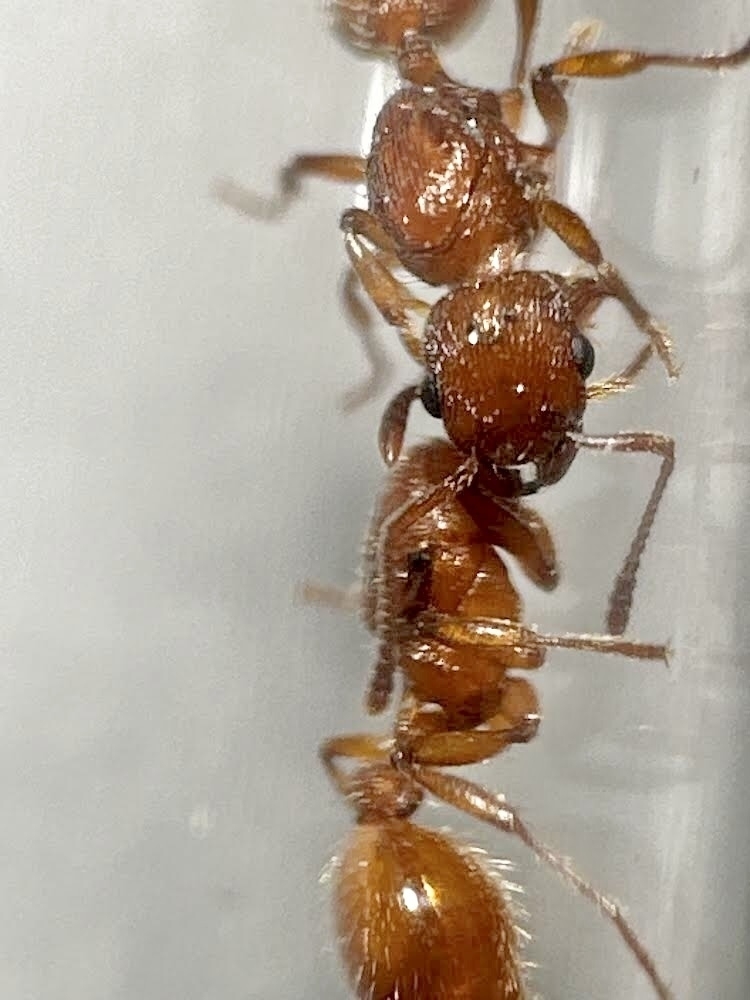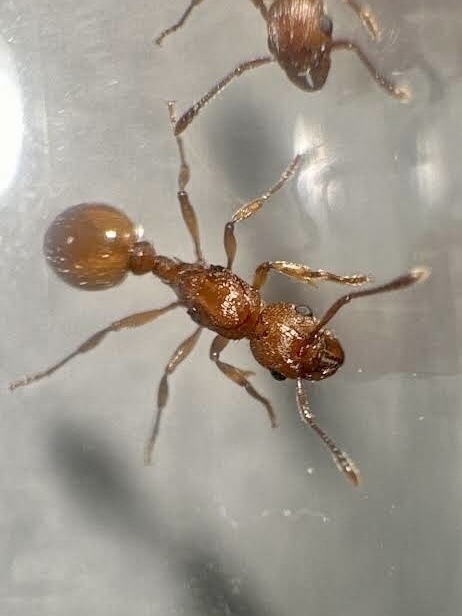Unidentified Myrmica sp. Queens - Rule of three?
Yesterday evening, around 6:30 PM, I was out in the yard and found three Myrmica sp. queens under a single rock. I hadn’t actually planned on searching for any more queens that day, I’d been studying and just had a weird feeling that there might be a queen somewhere in the yard. It wasn’t something I could explain, just an instinct that made me grab a cup and a lid and head outside. I wasn’t expecting to find three queens at once, though.
I asked around in the ant-keeping community to see if there were still any nuptial flights happening in Alberta and learned that both Lasius and Myrmica were still flying. That gave me a bit of motivation to poke around the yard, but I wasn’t holding out hope for much. It had rained the night before and continued on through most of the morning, so by the time I was outside, it was about 19°C and cloudy, the ground still damp from the rain.
I haven’t gotten any photos detailed enough to properly ID the queens down to the species level yet, but what really caught my attention was that all three queens were sharing the same space. Typically, queens found new colonies alone, especially if they aren’t known to be polygynous, so finding these three queens huddled together under one rock made me wonder if this species might have some level of polygyny. It’s not unheard of in the Myrmica genus, but it’s still something I’ll need to observe. That curiosity led me to take two of the queens and see if they would co-found a colony together, hoping to get some insight into their behavior.
I’ve set the pair and the lone queen up in two separate test tubes. Myrmica queens are semi-claustral, which means they’ll need to leave the nest to forage while founding their colonies. It makes the process a bit more complex because they’ll need more care and monitoring. Right now, it’s a waiting game—observing how the queens interact and whether or not the pair can live cooperatively as a polygyne colony. It’s still early days, but I’m hopeful that watching them will reveal some interesting behaviors.
I’ve read that most species of Myrmica don’t need diapause for their first year of brood when kept in captivity, so I’ll be waiting a few weeks to see if they lay eggs. If they haven’t laid eggs within two weeks, I’ll go ahead and put them into diapause. They’ll join Owl in the fridge, resting beside her tube. Until then, though, it’s all about patience and watching how these queens settle into their new setups. Hopefully, I’ll have eggs soon, and if not, into the fridge they’ll go.

